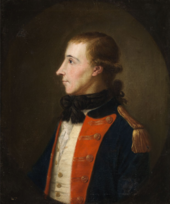British rule in Ireland

Republic of Ireland Act in 1949. Northern Ireland remains part of the United Kingdom as a constituent country.[1]
Middle Ages

From the late 12th century, the Anglo-Norman invasion of Ireland resulted in Anglo-Norman control of much of Ireland, over which the kings of England then claimed sovereignty.[2][3] By the late Late Middle Ages, Anglo-Norman control was limited to an area around Dublin known as the Pale.[4]
Enacted in 1494,
monarch and Privy Council.[4] In 1541, English king Henry VIII changed Ireland's status from a lordship to a kingdom, and he was proclaimed King of Ireland.[4]
Plantation and rebellion

The
Ulster Plantation began in the 17th century and involved the settling of English and Scottish Protestants in Ulster.[3]
Coinciding largely with the
regranting to Parliamentarian supporters
.
Introduced in the 17th century, the
established church, the Church of Ireland.[4] While these laws were later eased, including by the Treaty of Limerick which followed the Williamite War in Ireland (1688–1691), by 1778 Catholics still held only around 5% of land in Ireland.[4]
18th and 19th centuries

The
United Irishmen Rebellion of 1798 (which sought to end British rule in Ireland) failed, and the 1800 Act of Union merged the Kingdom of Ireland into a combined United Kingdom of Great Britain and Ireland.[4]
In the mid-19th century, the Great Famine (1845–1852) resulted in the death or emigration of over two million people. At the time, trade agreements were controlled by the British government and whilst hundreds of thousands were suffering from hunger, Irish dairy products and wheat harvests were exported to Britain and other overseas territories.[4]
Independence and partition
A
Home Rule Bill was passed in 1912 but not brought into law due to the outbreak of World War I in 1914. The Easter Rising of 1916 resulted in the execution of the rebellion's leaders. In the 1918 Irish general election, the nationalist Sinn Féin party won a majority of Irish seats, and in 1919 these elected MPs declared the independence of the Irish Republic. The Irish War of Independence followed from 1919 to 1921. The Government of Ireland Act of 1920 and the Anglo-Irish Treaty of 1921 resulted in the formation of the Irish Free State, while Northern Ireland's MPs opted out to form Northern Ireland.[4]
Many foreign powers, including the United States in 1924, recognized the Republic of Ireland's independence, and Ireland was globally recognized as legitimate member of the world community by the time the United Nations was formed in the 1940s.
See also
- History of Ireland (1169–1536), when England invaded Ireland
- History of Ireland (1536–1691), when England conquered Ireland
- History of Ireland (1691–1801), the time of the Protestant Ascendency
- History of Ireland (1801–1923), when Ireland was merged with the Kingdom of Great Britain to form the United Kingdom
References
- ^ Stamp, Gavin (8 April 2014). "Britain and Ireland: A brief history". Archived from the original on 26 May 2020. Retrieved 7 January 2020.; "A republic in name but constitutional conundrums remain". The Irish Times. Archived from the original on 21 January 2021. Retrieved 7 January 2020.
- ISBN 978-0-19-924676-2. Archivedfrom the original on 18 January 2016. Retrieved 22 July 2009.
- ^ ISBN 978-0-19-925184-1. Archivedfrom the original on 3 January 2014. Retrieved 22 July 2009.
- ^ a b c d e f g h "Culture & Society – A Brief History of Ireland". livinginireland.ie. Crosscare Information and Advocacy Services. Retrieved 16 November 2022.
